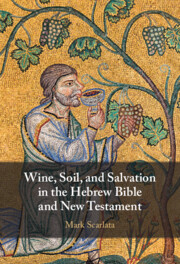132 results
Voluntary redistribution mechanism in asymmetric coordination games
-
- Journal:
- Experimental Economics / Volume 25 / Issue 2 / April 2022
- Published online by Cambridge University Press:
- 14 March 2025, pp. 444-482
-
- Article
-
- You have access
- Open access
- HTML
- Export citation
2 - Community Commitment Signaling Framework
-
- Book:
- We Choose You
- Published online:
- 06 February 2025
- Print publication:
- 13 February 2025, pp 46-69
-
- Chapter
- Export citation
4 - An Aggregate Test of Community Commitment Signaling
-
- Book:
- We Choose You
- Published online:
- 06 February 2025
- Print publication:
- 13 February 2025, pp 93-119
-
- Chapter
- Export citation
Chapter 1 - Forging Literary Connections
- from Part I - Protest
-
- Book:
- Vivisection and Late-Victorian Literary Culture
- Published online:
- 30 January 2025
- Print publication:
- 06 February 2025, pp 23-48
-
- Chapter
- Export citation
An Enigmatic Manteño Burial from Buen Suceso, Ecuador, AD 771–953
-
- Journal:
- Latin American Antiquity , First View
- Published online by Cambridge University Press:
- 23 January 2025, pp. 1-9
-
- Article
-
- You have access
- Open access
- HTML
- Export citation

Wine, Soil, and Salvation in the Hebrew Bible and New Testament
-
- Published online:
- 09 January 2025
- Print publication:
- 23 January 2025
Violence and the Israelite Priesthood: Between Sacrifice and Bloodshed
-
- Journal:
- Harvard Theological Review / Volume 118 / Issue 1 / January 2025
- Published online by Cambridge University Press:
- 10 March 2025, pp. 1-18
- Print publication:
- January 2025
-
- Article
-
- You have access
- Open access
- HTML
- Export citation

Afro-Brazilian Religions
-
- Published online:
- 30 November 2024
- Print publication:
- 02 January 2025
-
- Element
- Export citation
11 - The Language of Epic Sacrifice
- from Part IV - Epic People
-
-
- Book:
- The Cambridge Companion to Ancient Greek Epic
- Published online:
- 04 December 2024
- Print publication:
- 28 November 2024, pp 231-257
-
- Chapter
- Export citation
5 - On Believing in Lucian: The Religious Polemics
- from Part I
-
-
- Book:
- The Cambridge Companion to Lucian
- Published online:
- 07 November 2024
- Print publication:
- 21 November 2024, pp 99-114
-
- Chapter
- Export citation
9 - Making Empire
- from Part II - Themes in the Making of Hegemony
-
- Book:
- Religion and the Making of Roman Africa
- Published online:
- 24 October 2024
- Print publication:
- 07 November 2024, pp 384-390
-
- Chapter
- Export citation
8 - Remaking Spaces and Societies
- from Part II - Themes in the Making of Hegemony
-
- Book:
- Religion and the Making of Roman Africa
- Published online:
- 24 October 2024
- Print publication:
- 07 November 2024, pp 320-383
-
- Chapter
- Export citation
7 - Making Offerings
- from Part II - Themes in the Making of Hegemony
-
- Book:
- Religion and the Making of Roman Africa
- Published online:
- 24 October 2024
- Print publication:
- 07 November 2024, pp 270-319
-
- Chapter
- Export citation
Talmudo-Mīmāṃsā: Towards a Science of Sacrifice
-
- Journal:
- Harvard Theological Review / Volume 117 / Issue 4 / October 2024
- Published online by Cambridge University Press:
- 31 December 2024, pp. 655-680
- Print publication:
- October 2024
-
- Article
-
- You have access
- Open access
- HTML
- Export citation
“Draw a Guerrilla!” Betrayal, Solitude, and Revolutionary Art
-
- Journal:
- Latin American Research Review / Volume 59 / Issue 4 / December 2024
- Published online by Cambridge University Press:
- 03 June 2024, pp. 895-909
-
- Article
-
- You have access
- Open access
- HTML
- Export citation
Chapter 2 - Yahweh Who Prepares the Way for a King (1 Samuel 1:1–4:1a)
-
- Book:
- The Theology of the Book of Samuel
- Published online:
- 08 May 2024
- Print publication:
- 09 May 2024, pp 14-49
-
- Chapter
- Export citation
3 - Defining Duty
- from Part II - Social Groups
-
- Book:
- Making Sense of the Great War
- Published online:
- 11 April 2024
- Print publication:
- 18 April 2024, pp 119-159
-
- Chapter
- Export citation
8 - Ritual Law
- from Part III - The Biblical Laws
-
-
- Book:
- The Cambridge Companion to Law in the Hebrew Bible
- Published online:
- 11 April 2024
- Print publication:
- 18 April 2024, pp 158-178
-
- Chapter
- Export citation
Chapter 7 - The Totem and the Vampire
- from Part III - Societies of Blood
-
- Book:
- Biopolitics and Animal Species in Nineteenth-Century Literature and Science
- Published online:
- 11 January 2024
- Print publication:
- 01 February 2024, pp 150-179
-
- Chapter
- Export citation
Christ: A Religious Priest? A Thomistic Approach
-
- Journal:
- New Blackfriars / Volume 105 / Issue 3 / May 2024
- Published online by Cambridge University Press:
- 26 January 2024, pp. 230-243
- Print publication:
- May 2024
-
- Article
-
- You have access
- Open access
- HTML
- Export citation


